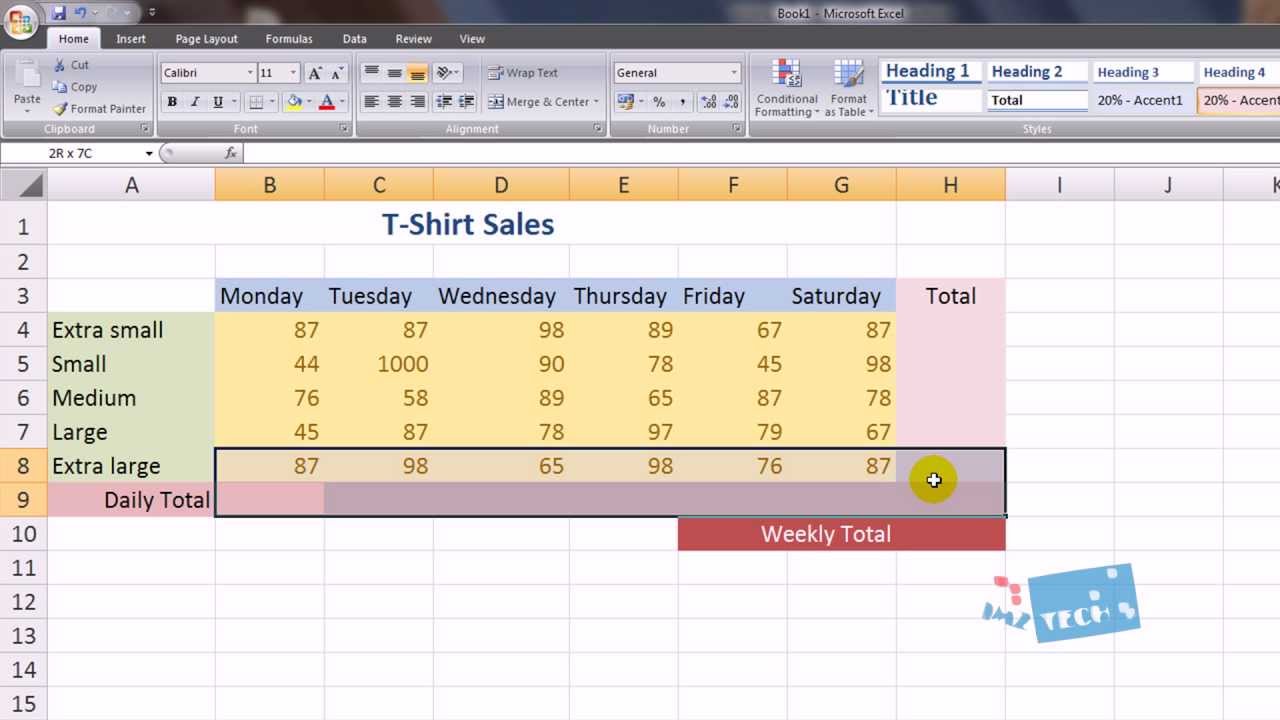5 Essential Tips for Setting Up Your Excel Sheet

Creating an organized and efficient Excel spreadsheet is more than just entering data into cells. It requires a strategic approach to maximize functionality, readability, and accuracy. Here, we dive into 5 essential tips that will elevate your Excel usage, ensuring you not only manage data effectively but also impress with your spreadsheet skills.
1. Use Data Validation for Accurate Input

Before you even think about organizing your data, ensure it’s entered correctly from the start. Data validation in Excel allows you to control what users can enter into a cell:
- Allow/Drop-Down Lists: Limit data entry to pre-defined choices to avoid manual entry errors.
- Number Range: Specify ranges for numerical inputs to ensure values are within your acceptable limits.
- Date/Time Validation: Ensure dates and times entered are within a specific range or follow a certain format.
- Custom Validation: Write formulas to validate data based on complex criteria.

🔍 Note: Using data validation not only reduces errors but also streamlines data analysis by ensuring consistent and accurate data entry.
2. Optimize Your Sheet with Conditional Formatting

Data visualization isn’t just for presentations; it can make your data entry process more efficient. Here’s how you can leverage conditional formatting:
- Highlight Cells Rules: Automatically highlight cells that meet certain criteria, like values above or below a threshold.
- Data Bars, Color Scales, and Icon Sets: Provide visual cues to quickly interpret data trends and patterns.
- Top/Bottom Rules: Show the top 10 or bottom 10% of your data for quick analysis.

3. Structure Your Data with Named Ranges

Named ranges not only make your formulas more readable but also help in maintaining a well-structured Excel workbook:
- Create Named Ranges: Select a range and define a name for it through the ‘Name Box’ or ‘Name Manager.’
- Use in Formulas: Instead of cell references like A1:B10, use the named range for clarity and easier management.
- Naming Conventions: Use consistent naming conventions to avoid confusion and ensure clarity.
4. Leverage Tables for Efficient Data Management

Excel tables come with built-in features that can boost your productivity:
- Auto Filter: Quickly sort and filter data without writing custom code.
- Structured References: Use table names instead of cell references for dynamic formulas.
- Easy Expansion: Data can be added to tables, and the formatting and formulas will automatically adjust.
- Quick Calculations: Use table totals for instant calculations like sum, average, etc.
| Feature | Benefit |
|---|---|
| Auto Filter | Quickly sort and filter data |
| Structured References | Dynamically reference table columns |
| Easy Expansion | Add data without manual adjustments |
| Quick Calculations | Automate calculations for your data |

📊 Note: Using Excel tables can significantly reduce errors by ensuring data integrity, especially when expanding datasets.
5. Enhance Sheet Navigability with Hyperlinks

As your Excel workbook grows, navigation becomes key. Here are some tips to make it seamless:
- Link Between Sheets: Use hyperlinks to jump between different sheets or workbooks for quicker access.
- Table of Contents: Create a table of contents with links to different sections of your workbook.
- Label Navigation: Add labels or buttons to key areas, making them easily accessible.
- Keyboard Shortcuts: Learn or create custom shortcuts to jump to commonly used areas.

To wrap up, mastering these tips will not only improve your Excel sheet’s efficiency but also save you time and reduce errors. By setting up your Excel spreadsheets thoughtfully, you’re laying a foundation for better data management, analysis, and presentation. Each tip, from data validation to hyperlinks, has its unique contribution to enhancing the overall functionality of your work, making your Excel experience both productive and rewarding.
Why should I use data validation in Excel?

+
Data validation helps ensure that the data entered into your Excel sheet is accurate and consistent, reducing errors and streamlining data analysis.
Can I customize conditional formatting in Excel?

+
Yes, conditional formatting in Excel is highly customizable. You can define your own rules for cell color changes, data bars, icon sets, and more based on your data’s specific needs.
How do named ranges help in Excel?

+
Named ranges simplify formula creation, make your spreadsheets more readable, and easier to manage as you work with large sets of data.
What are the benefits of using Excel tables?

+
Excel tables provide auto filtering, structured references, easy data expansion, and quick calculations, making data management more efficient and reducing the need for manual adjustments.
Are there shortcuts for navigating between sheets?

+
Yes, you can use hyperlinks, keyboard shortcuts, or create a table of contents for efficient navigation in Excel workbooks.